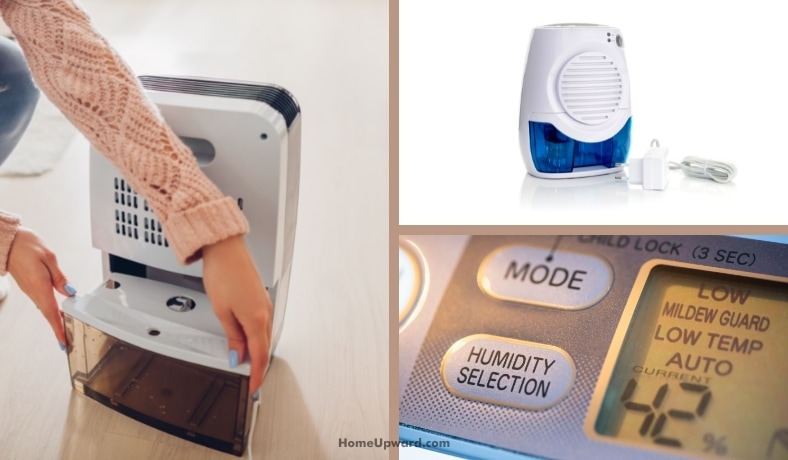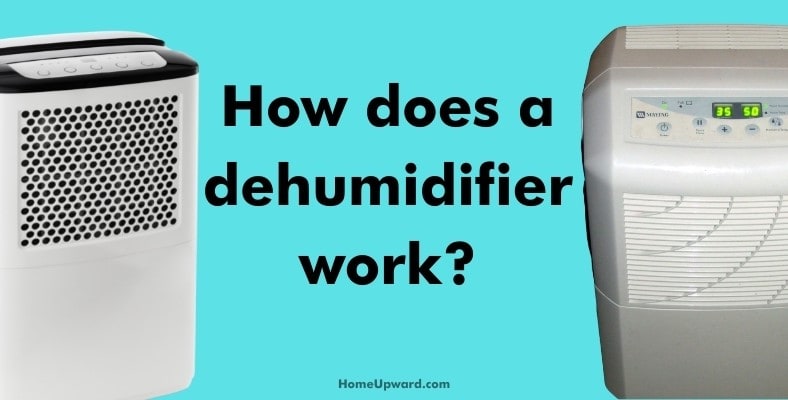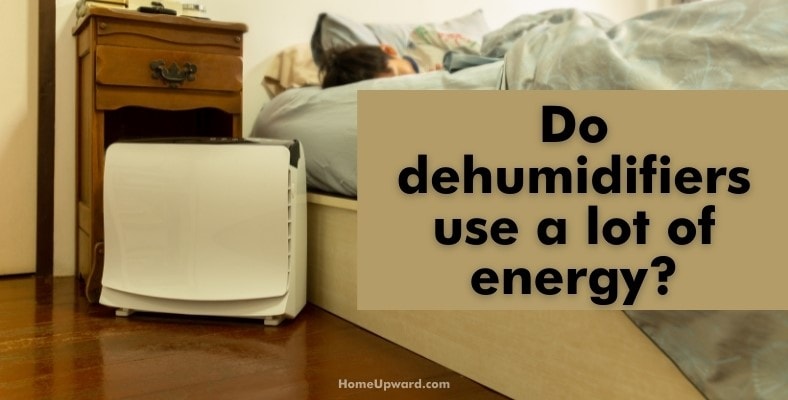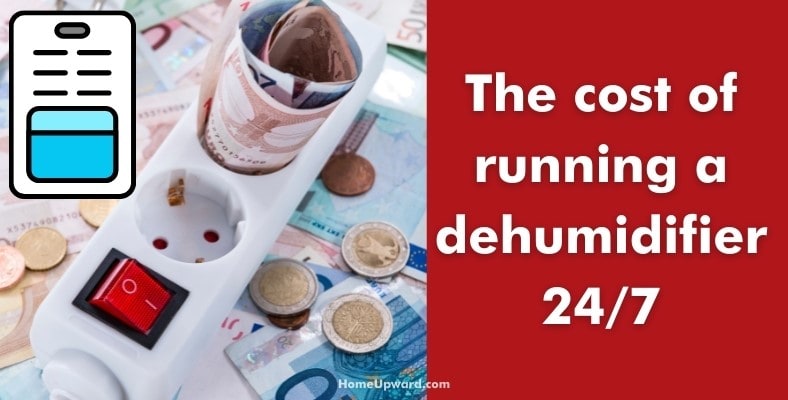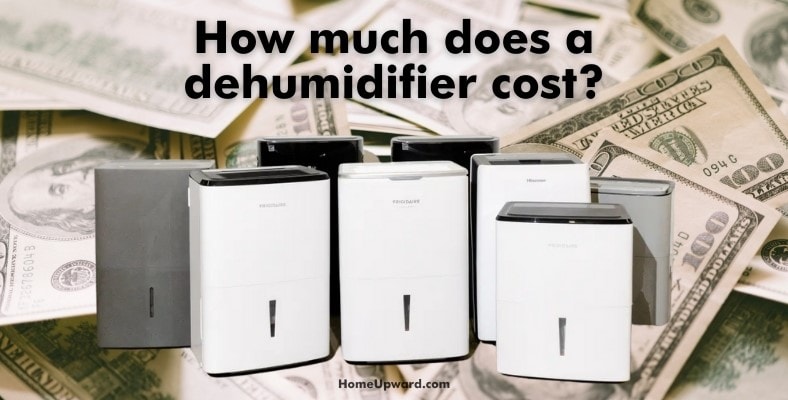Dehumidifiers reduce humidity levels in homes to maintain a healthy, moisture-free environment. However, rising electricity bills pose a major problem for homeowners, making it necessary to remain aware of a dehumidifier’s power consumption and energy costs.
In this article, I’ll share what you need to know about dehumidifiers operating costs to expect and a lot more, too!
Contents
How Does a Dehumidifier Work?
Many modern homes benefit from energy-efficient designs where the house remains sealed tight from the outside air. However, a sealed home can cause humidity problems, which may lead to aggravated allergies and other respiratory conditions caused by asthma, mold, rust, and more. Dehumidifiers remove excess moisture from the air to keep homes free from humidity, providing a healthier place to live.
Dehumidifiers work in two different ways. Refrigeration dehumidifiers cool the air and remove moisture with the help of technology similar to that used in refrigerators and ACs. Absorption/adsorption dehumidifiers use a specialized drying material to either absorb or adsorb moisture from the air.
Below, you can learn more about how refrigeration, absorption, and adsorption dehumidifiers work.
Refrigeration
A refrigeration dehumidifier works based on the following principles:
- A grille on one side of the dehumidifier sucks in warm, moist air by using an electric fan to draw the air inward.
- The warm air passes over coolant pipes.
- The moisture-free air then passes over a hot compressor/condenser unit and returns to its original temperature.
- The warm, dry air then blows back inside the home through a separate grille.
- The removed moisture drips down into a collecting tray at the bottom of the dehumidifier.
- A plastic float rises gradually upward as the collecting tray fills up. When the tray becomes full, the float sets off an electric switch that turns the fan off and turns on an indicator light, informing you that the collecting tray needs emptying.
Absorption/Adsorption
An absorption/adsorption dehumidifier makes use of a water-holding material that soaks up moisture from the air and then squeezes the water out. This mopping action involves either absorption, where the water soaks into a dry absorbent material, or adsorption, where the water sticks to the surface of a dry material.
An absorption dehumidifier functions on the following principles:
- A duct draws in humid air from the room.
- The air passes through a large, water-absorbing rotating wheel, which removes the moisture.
- An electric fan then draws the dry air in before blowing it back into the room.
- An electric heating element keeps the air duct hot. The moisture-absorbing wheel rotates through the heated air space.
- Hot air blown past the moisture-absorbing material dries out the wheel.
- An electric fan then blows the hot, humid air outdoors through an exhaust duct.
Do Dehumidifiers Use a Lot of Energy?
The amount of energy consumed by a dehumidifier depends on its energy efficiency and size. Desiccant dehumidifiers represent a less expensive option when compared to refrigerant-based dehumidifiers. Newer models also prove more energy-efficient than older ones.
How Many Amps Does a Dehumidifier Draw?
The amperage costs of dehumidifiers vary depending on their sizes, with the larger models providing more energy-efficient results.
- 70-pint dehumidifiers – Between 3.1 to 7.5 Amps at 110V and 1.5 to 3.25 Amps at 220V
- 50-pint dehumidifiers – Between 3.6 to 7.2 Amps at 110V and 1.8 to 2.6 Amps at 220V
- 30-pint and 35-pint dehumidifiers – Between 3.2 to 5.2 Amps at 110V and 1.8 to 2.6 Amps at 220V
- 20-pint and 22-pint dehumidifiers – Between 2.7 Amperes at 110V and 1.35 Amps at 220V
The Cost of Running a Dehumidifier 24/7
Dehumidifiers do not consume as much energy as water heaters or ACs. According to the US Department of Energy, dehumidifiers fall into the category of ‘low electricity expenditure’ (low to moderate energy use) HVAC devices. However, running a dehumidifier 24/7 can raise your energy bills by a significant amount. Calculating the approximate total cost to run a dehumidifier 24 hours a day will help you budget your electrical expenses.
The calculation of the daily power expenditure of a dehumidifier involves a simple formula. Multiply the operational hours of the dehumidifier by its hourly energy consumption to derive a daily estimate of the total energy consumed. Then, multiply the daily energy consumed by the price per unit of energy to arrive at your total cost per day.
How Much Does It Cost to Run a Dehumidifier All Day?
The average cost of running a dehumidifier for a full day depends on two factors: wattage and the average price of electricity in your area. Once you have determined how much power your unit consumes per hour, you can arrive at the hourly operating cost. Then, merely multiply the hourly operating cost by 24.
You can also calculate the total cost per week by multiplying the daily cost by seven.
How Much Does a Dehumidifier Cost?
The cost of dehumidifiers generally varies according to their capacities. Consider the following types of dehumidifiers when budgeting for a new unit.
Mini-dehumidifiers
A mini-dehumidifier fits perfectly into small spaces like bathrooms and closets. This type of dehumidifier can handle one to 10 pints of water and usually costs between $40 to $70.
Small and Medium Capacity Dehumidifiers
Small and medium capacity dehumidifiers hold between 11 and 25 pints of water, which works well in living rooms. Depending on their size and included features, they cost between $100 and $250.
Large Dehumidifiers
Large dehumidifiers work well in basements and other spacious areas. These dehumidifiers possess capacities that range from 25 to 70 pints and cost about $150 to $400. Large, high-priced dehumidifiers come with oversized tanks, specialized hose attachments, frost control, and low-temperature operating features.
Self-Draining Dehumidifiers
Self-draining dehumidifiers require less maintenance and can serve extra-large basements or narrow crawl spaces. Depending on their capacity, compactness, and other features, these dehumidifiers may cost around $800 to $1,200.
Whole-House and Industrial/Commercial Dehumidifiers
Suitable for light, commercial use, whole-house dehumidifiers have capacities between 80 to 260 pints and cost around $1000 to $2500. Industrial/commercial dehumidifiers may cost around $5,500 to $6,500 or more, depending on their features.
Why Are Dehumidifiers So Expensive?
Dehumidifiers rely on components like capacitors, regulators, valves, condensers, sensors, and many others to function properly. Each component plays a specific role and contributes to the general operation of the dehumidifier. Every component comes at its own cost, although the core parts of the dehumidifier have higher costs.
The cost of assembling these different parts adds to a dehumidifier’s overall price. The manufacturing cost includes the purchase price of the dehumidifier’s parts, operational costs of automated machinery, labor, software, and more.
When Do You Need a Dehumidifier?
Dehumidifiers provide several benefits for homes in areas with humid climates. Allergies represent one of the most common problems in homes due to dust mites, mildew, mold, or other particulates. Good dehumidifiers solve these issues and provide other benefits as well. The following points highlight the signs that you need a dehumidifier:
- Water stains on walls and ceilings of homes
- Persistent condensation on the windows
- High humidity in poorly ventilated rooms
- Musty smells or odors caused by mildew
- Small black spots caused by mold spores on the walls

